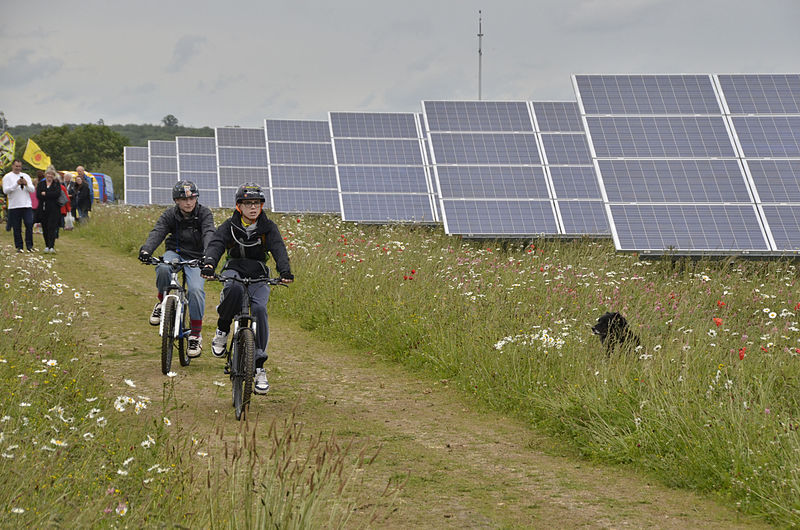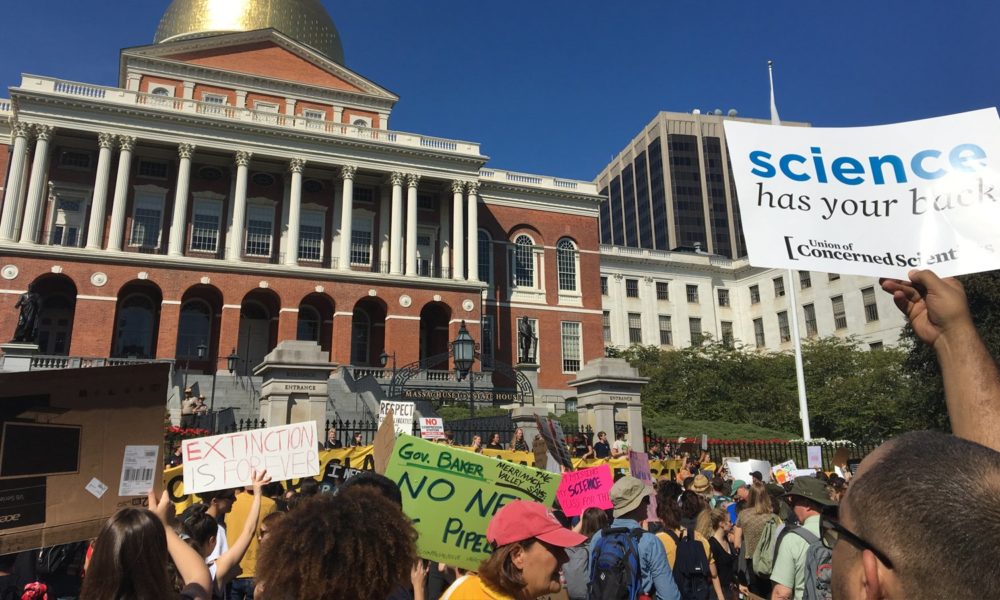March marked a major milestone for equitable climate policy in Massachusetts: After years of efforts and following two vetoes by Gov. Charlie Baker, the legislature passed a long-awaited bill addressing climate change, advancing environmental justice and boosting clean energy and clean transportation. The difference this time is that the bill was successfully signed into law by Governor Baker on March 26.
This new law, An Act Creating a Next-Generation Roadmap for Massachusetts Climate Policy, is the result of years of work, discussions, negotiations and a lot of effort from a myriad of organizations, legislators, coalitions and in general, people that care about a healthy and livable world now and in the future. Its passing is really a big victory for all the hard work that went into making this law a reality for the Commonwealth.
I share with you 5 of the reasons why I celebrate this new climate law!
1. It sets a clear vision and trajectory to reduce carbon dioxide emissions to address climate change
The state is now required to achieve net-zero emissions by 2050, aligned with the goals of the Paris Climate Agreement. It also recognizes that the path we take to get to that net-zero vision matters. It requires that, by 2030, carbon dioxide emissions levels must be at least 50% below 1990 levels, and 75% lower by 2040.
The law also requires clear sector-specific targets for each of these interim targets. This means that no sector (electricity, transportation, commercial and industrial buildings, residential buildings, industrial processes, and natural gas distribution) gets to be a free rider, and that the state understands that to fight the climate crisis we need all hands-on deck.
A 2020 United Nations Environment Program report confirmed that the world could see a 3 degree rise in temperature this century without sharp and rapid emissions cuts. So, this law definitely gives me hope that we can still avert those sobering projections.
2. The law provides enforceable tools to protect the life and health of environmental justice (EJ) communities

Climate Justice means Racial/Economic/Immigrant Justice!!!
2019 Climate Strike Boston
Socioeconomic and environmental inequities have systemically affected a disproportionate number of Black, Brown, Indigenous, immigrant and low-income communities. These inequities, including a harmful exposure to particulate matter pollution, have only elevated their risk of getting infected and dying from COVID-19.
Enough is enough. We need to make sure that, in the name of climate action, we do not perpetuate these inequities. That’s why I’m so thankful that this law starts righting the wrong by providing enforceable protections to environmental justice communities. Two key highlights are that it codifies into law what constitutes an EJ community, and requires the assessment of cumulative impacts for projects proposed in or near EJ communities to prevent particular neighborhoods from being subjected to even greater industrial and environmental burdens.
Having this important piece in the new law is due to the concerted efforts of a whole lot of amazing advocates in EJ communities and supporters in the Massachusetts State House. Hats off to community leaders fromGreenRoots, Neighbor to Neighbor, Alternatives for Community and Environment, Coalition for Social Justice, the North American Indian Center of Boston, and the Massachusetts EJ Table. Deep appreciation also to the sponsors of the EJ component of this law, Rep. Michelle DuBois, Rep. Liz Miranda, Rep. Adrian Madaro, Sen. Jamie Eldridge and Sen. Sal DiDomenico. This is a big win for the more than 20 years of efforts from the EJ movement in Massachusetts.
3. It boosts clean energy and clean transportation, key components of an energy transition

Community solar projects are becoming popular as a way to provide access to solar for everyone while being able to take advantage of the economies of scale for larger projects. (Source: Wikimedia)
To help in meeting the sector-specific targets mentioned above, the law has important provisions to ensure that Massachusetts continues its clean energy progress, and to electrify its transportation sector. For the electricity sector, utilities are now required to meet at least 40% percent of their customers’ needs with new renewable energy by 2030. It also increases the state’s offshore wind target from 3,200 to 5,600 megawatts, enough to meet close to half of Massachusetts’s electricity needs. And it includes provisions aimed at making solar energy more affordable and accessible to Massachusetts homes and businesses.
Transportation is the only sector in Massachusetts where emissions are higher today than they were in 1990. The law seeks to start addressing this situation by setting targets to increase the adoption of electric vehicles and charging stations. As stated by my colleague Paulina Muratore: “We can’t solve the problem of climate change without addressing pollution from cars, trucks and buses.”
Given foreseeable increases in electricity demand due to electrification of heating and transportation, and the adverse climate and health consequences of burning fossil-fuels like gas to generate electricity, I particularly applaud the steps taken by this law to increase renewable energy deployment in the Commonwealth.
4. It pays attention to workforce development, essential to our economic recovery

Workers dwarfed by offshore wind blade tips and towers at Siemens deployment dock in Hull. Offshore wind is part of the revival of many port cities in Europe.
One valued benefit of clean energy is that it creates jobs. The Massachusetts Clean Energy Center (MassCEC) estimates that there were 114,000 workers in the state’s clean energy industry by the end of 2019. Since the pandemic started, there was a net loss of close to 14,000 workers from March through September 2020.
As our economy starts exploring recovery options, I celebrate that the new climate law goes one step further and, in addition to increasing by $12 million per year the workforce training funding for MassCEC, it directs this agency to specifically create capacity building programs for certified minority-owned and women-owned small business enterprises; individuals residing within an environmental justice community; and current and former workers from the fossil fuel industry.
Our clean energy economy has a key role to play in any recovery efforts. This law understands that we also need to ensure a just transition in which no one is left behind.
5. Two key energy entities are required to include emissions reductions as a priority for their decision-making processes
MassSave, the state’s energy efficiency program, and the Department of Public Utilities (DPU), the agency that regulates electric and gas utilities and water companies, are now required to include carbon dioxide emissions reductions as a priority for their work. On the energy efficiency front, this means that incentives should prioritize efficiency improvements that move as away from burning fossil fuels, for example, installing an electric heat pump instead of a gas furnace. For the DPU, this agency’s priorities went from originally 3 (reliability, safety and affordability) to 6 (adding emission reductions, equity and security). That’s crucial, because the DPU is where electric rates get decided on and energy contracts get approved.
It’s encouraging to see that MassSave and the DPU are being required, by law, to support the implementation of this climate legislation. These agencies have a key role to play in helping us to prioritize climate-smart energy investments now.
We don´t have stop here. But for now, let’s celebrate!

Our future in your hands – demonstrators make a statement on their hands. Boston Climate Strike 2019
This law is a solid foundation that builds on its predecessor, the 2008 Global Warming Solutions Act. As with any new law, there is still much more work ahead of us as we focus on how to best implement it, and how to continue advancing a vibrant and equitable clean energy economy. And there are bills in the current legislative session that will be important for building on this foundation. All that’s a good thing because we cannot afford to stop here.
But for now, I invite you to pause for a minute and celebrate that we have a new climate law!

